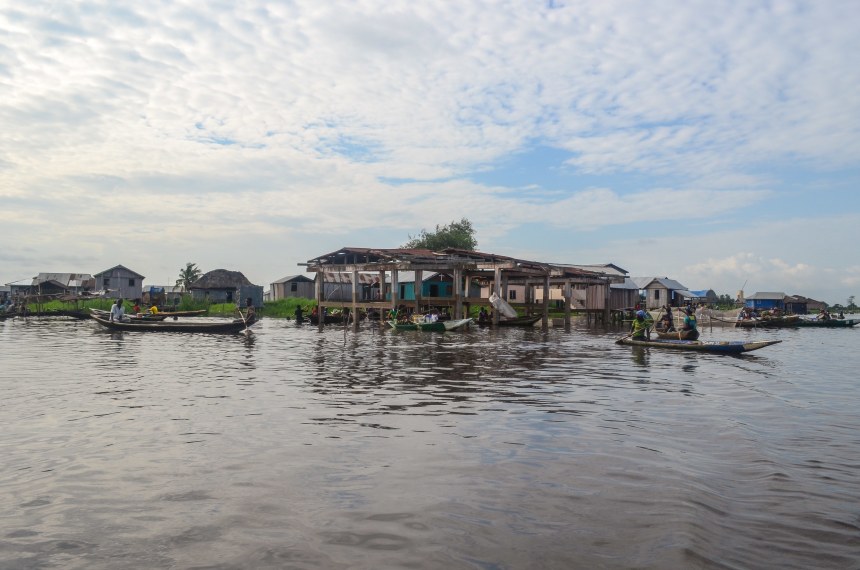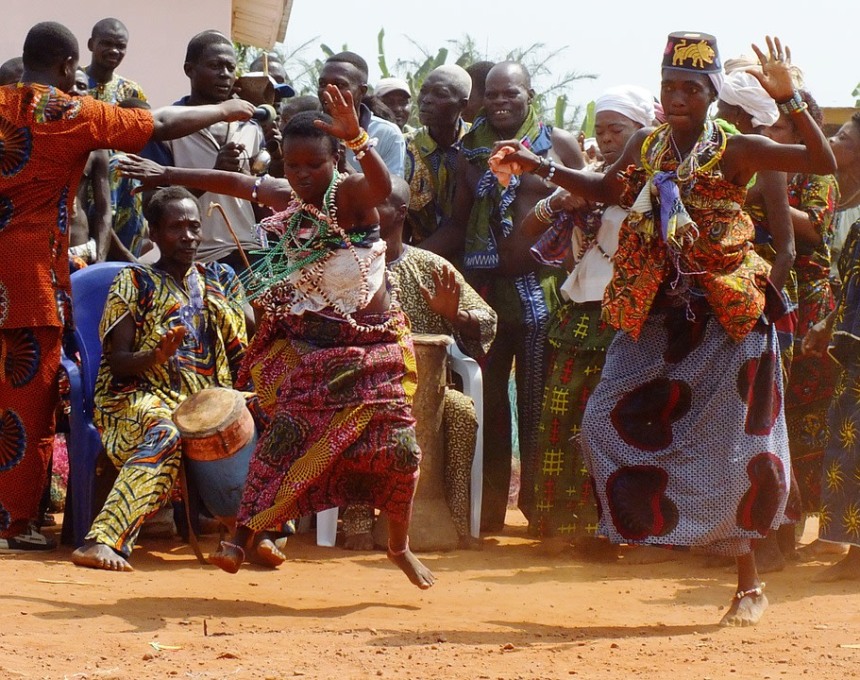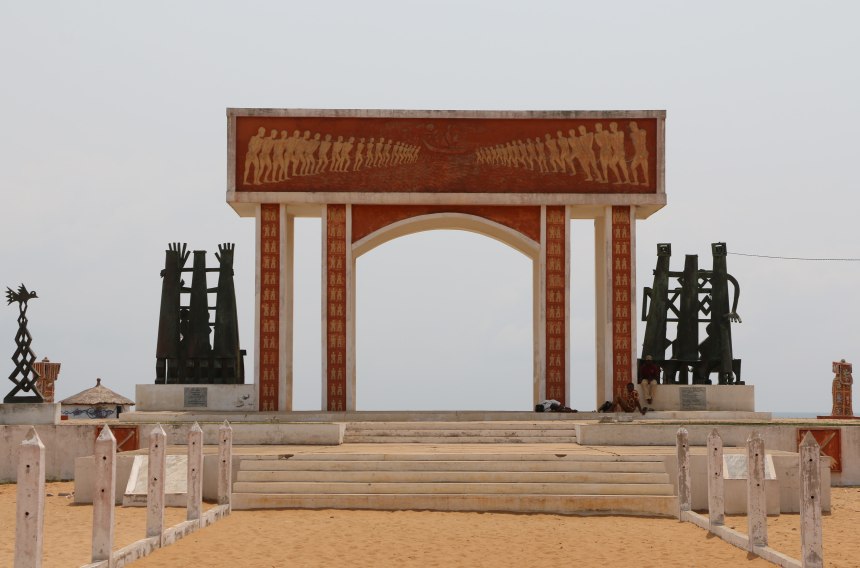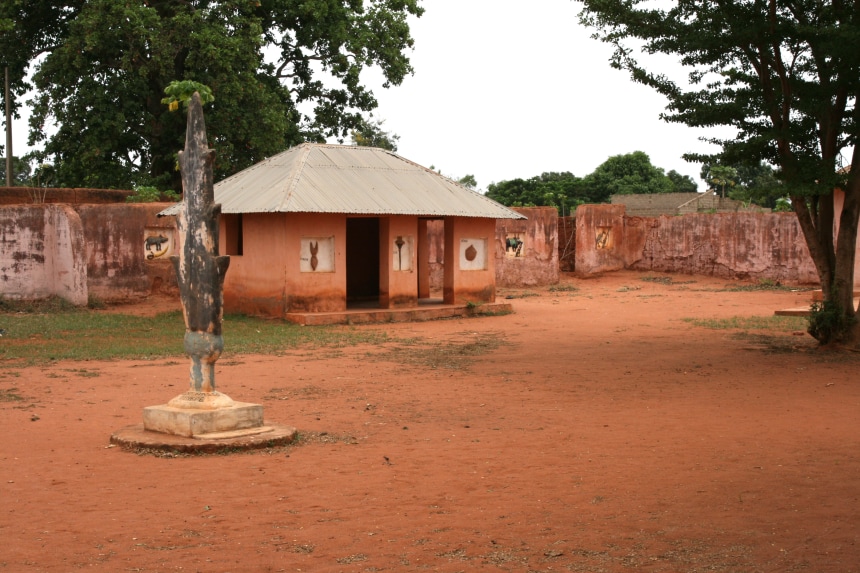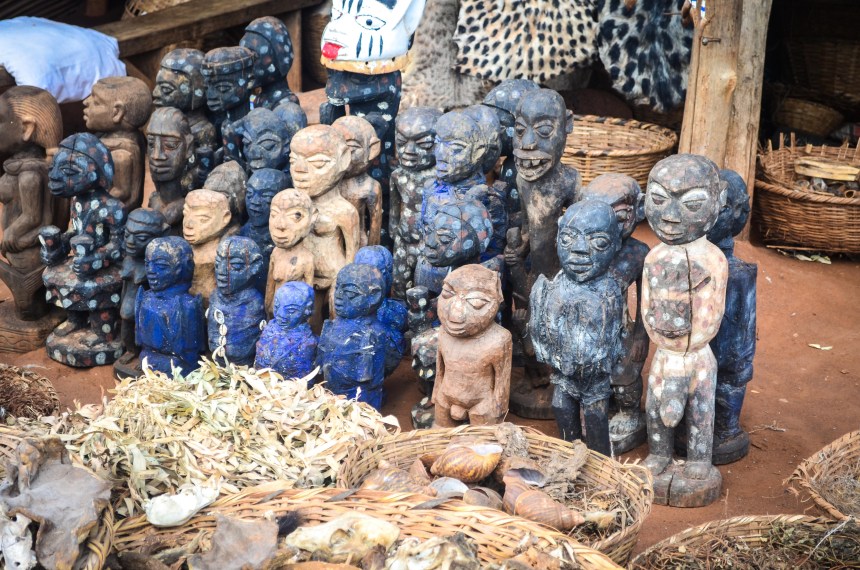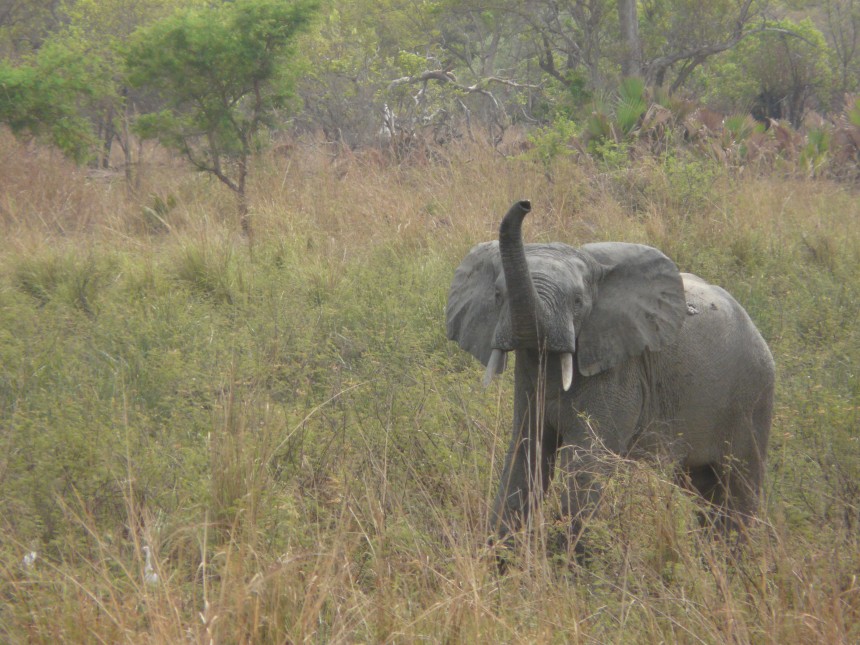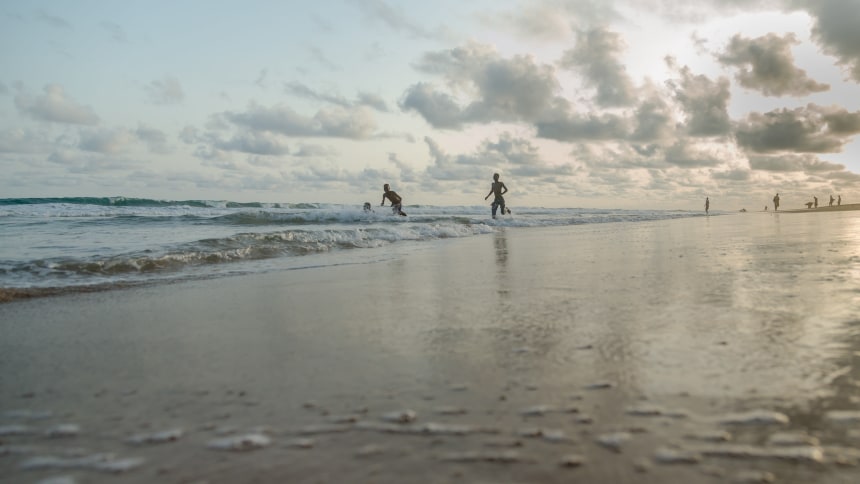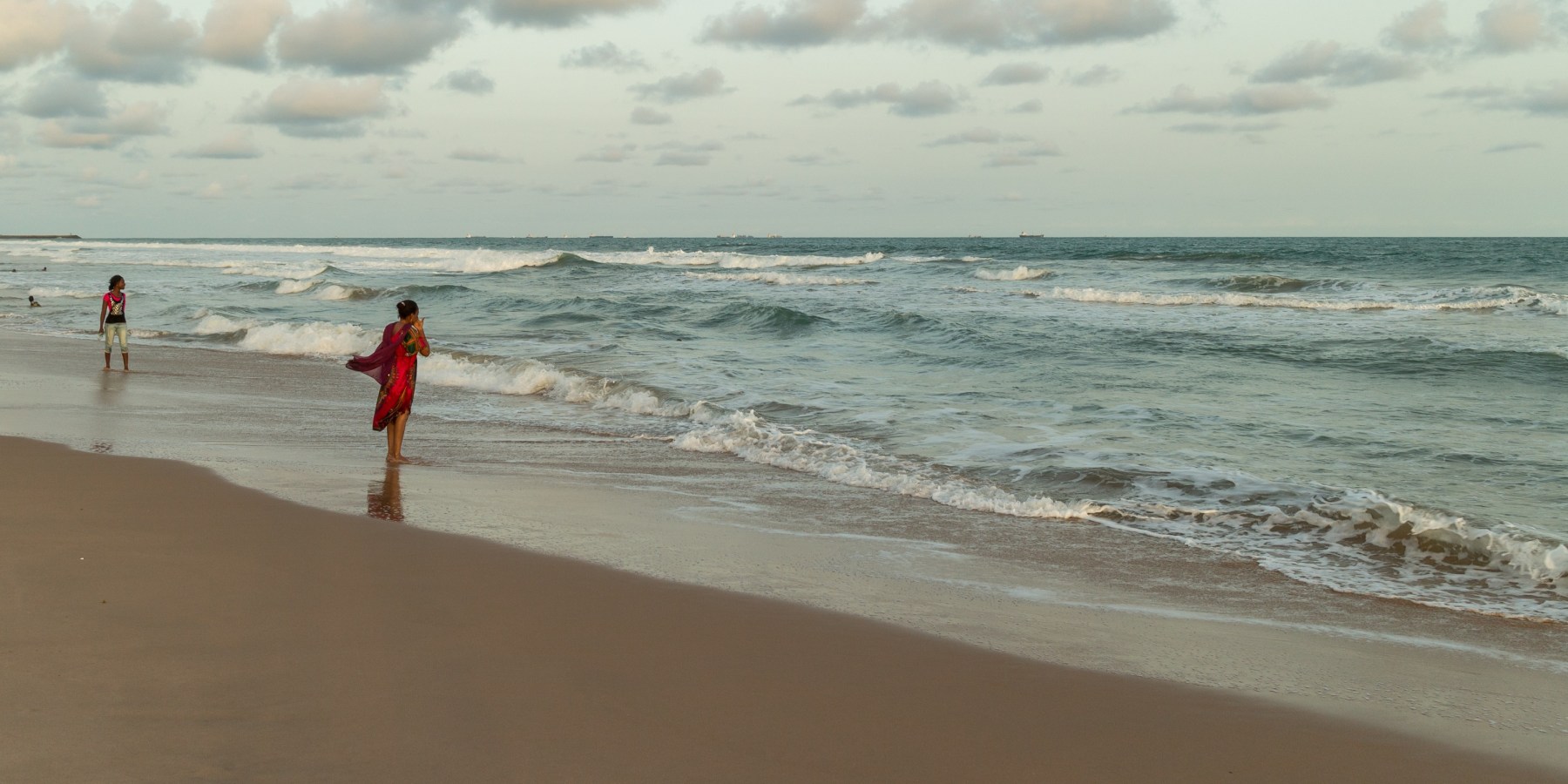Ross Cameron
Sandwiched between Nigeria and Togo, Benin stretches from the palm-fringed shores of the Gulf of Guinea, once the epicenter of the Atlantic slave trade, to the rugged Atakora Mountains, where lions, elephants, and cheetahs thrive. Despite its wealth of attractions, Benin remains off the beaten track and to get the best insight into the country’s complex and fascinating culture, here is a Benin tour guide.
Ganvié: The Venice of Africa
 Perching on stilts in the middle of the brackish Lake Nokoue is bustling Ganvié, Africa’s largest lake village. Nearly 30 000 Tofinu people call the village home and they live their entire lives on the water using dug-out canoes to glide between houses, small islands where farm animals are kept and public buildings, such as mosques and schools. What is more, an intricate network of underwater corrals ensures the villagers always have a plentiful supply of fish. While the canals and stilted houses of Ganvié are enchanting, the village also offers visitors an insight into Benin’s history of slavery and voodoo. As the African slavers hired by the Portuguese to capture indigenous peoples believed the lake was sacred and could not be crossed, the Tofinu people chose to set up home and Ganvié quickly became a haven for those trying to avoid capture.
Perching on stilts in the middle of the brackish Lake Nokoue is bustling Ganvié, Africa’s largest lake village. Nearly 30 000 Tofinu people call the village home and they live their entire lives on the water using dug-out canoes to glide between houses, small islands where farm animals are kept and public buildings, such as mosques and schools. What is more, an intricate network of underwater corrals ensures the villagers always have a plentiful supply of fish. While the canals and stilted houses of Ganvié are enchanting, the village also offers visitors an insight into Benin’s history of slavery and voodoo. As the African slavers hired by the Portuguese to capture indigenous peoples believed the lake was sacred and could not be crossed, the Tofinu people chose to set up home and Ganvié quickly became a haven for those trying to avoid capture.
Porto Novo: Benin’s Portuguese infused the capital city
 Named after the Portuguese city of Porto, it is no surprise that Benin’s capital is packed with gilded colonial architecture. A highlight of Porto Novo is the Musée Honmé, which is housed in the walled palace of the country’s former king and offers a rare insight into Benin’s royal history. For a touch of colonial history, Benin’s premier attractions are the Musée Ethnographique, which is housed in a breathtaking colonial building and details the country’s rich voodoo traditions, and the Musée da Silva, which showcases Portuguese West Africa’s links with the colonial power’s colony in Brazil. Beyond the history, the sustainable farm Centre Songhai and the bustling Grand Marché, where you can buy Benin’s freshest produce, show off the city’s vibrant culinary traditions. The capital’s hidden gem, however, is undoubtedly the traditional drum market in the Adjarra district, where you can browse a spectacular array of instruments and listen to local folk music.
Named after the Portuguese city of Porto, it is no surprise that Benin’s capital is packed with gilded colonial architecture. A highlight of Porto Novo is the Musée Honmé, which is housed in the walled palace of the country’s former king and offers a rare insight into Benin’s royal history. For a touch of colonial history, Benin’s premier attractions are the Musée Ethnographique, which is housed in a breathtaking colonial building and details the country’s rich voodoo traditions, and the Musée da Silva, which showcases Portuguese West Africa’s links with the colonial power’s colony in Brazil. Beyond the history, the sustainable farm Centre Songhai and the bustling Grand Marché, where you can buy Benin’s freshest produce, show off the city’s vibrant culinary traditions. The capital’s hidden gem, however, is undoubtedly the traditional drum market in the Adjarra district, where you can browse a spectacular array of instruments and listen to local folk music.
Ouidah: A beguiling fusion of enchanting voodoo and bohemian beach life
 Ouidah, known throughout Benin as the spiritual center of voodoo, offers a relaxing change of pace from the country’s energetic capital city. Ouidah’s most unforgettable voodoo experience is undoubtedly the Temple of Pythons, where up to 60 mammoth snakes are worshipped as the middlemen between the living and the dead. Not far from the temple is the site of the yearly voodoo festival, which takes place on January 10th. Nearly 10 000 people attend the festivities, which see adherents summon spirits and fall into trances.
Ouidah, known throughout Benin as the spiritual center of voodoo, offers a relaxing change of pace from the country’s energetic capital city. Ouidah’s most unforgettable voodoo experience is undoubtedly the Temple of Pythons, where up to 60 mammoth snakes are worshipped as the middlemen between the living and the dead. Not far from the temple is the site of the yearly voodoo festival, which takes place on January 10th. Nearly 10 000 people attend the festivities, which see adherents summon spirits and fall into trances.
 Ouidah is also where most slave ships set sail for the Americas. Today, a poignant memorial known as the Gate of No Return stands on the shoreline and is a must-see for anyone interested in Benin’s traumatic colonial history. Ouidah tour guides will also recommend the Zinzou Foundation Museum, housed in a spectacular 1920s villa, which is one of West Africa’s premier art galleries with tour guides on hand to explain the installations. What’s more, the city is famous for its sweeping expanses of white sand that are perfect for sunbathing. You could book a culture tour and explore the best of Benin here.
Ouidah is also where most slave ships set sail for the Americas. Today, a poignant memorial known as the Gate of No Return stands on the shoreline and is a must-see for anyone interested in Benin’s traumatic colonial history. Ouidah tour guides will also recommend the Zinzou Foundation Museum, housed in a spectacular 1920s villa, which is one of West Africa’s premier art galleries with tour guides on hand to explain the installations. What’s more, the city is famous for its sweeping expanses of white sand that are perfect for sunbathing. You could book a culture tour and explore the best of Benin here.
Abomey: The ancient heart of Benin
 The name Abomey once struck fear into the hearts of Benin’s colonial invaders, as it was the capital of the fearsome Dahomey Kingdom. While the kingdom collapsed in 1900, many of its palaces and religious complexes remain remarkably intact to this day and visitors to Abomey can expect to be transported back in time to Benin’s enigmatic past. The highlight of Abomey is undoubtedly the UNESCO World Heritage-listed palace complex, which sprawls across much of the town center. During its heyday, the palace could accommodate around 8000 people and many parts of it were two-storied. The most impressive area is the Royal Compound that is decorated with voodoo inspired bas-reliefs and houses the Abomey Historical Museum, where tour guides help visitors interpret the town’s rich history.
The name Abomey once struck fear into the hearts of Benin’s colonial invaders, as it was the capital of the fearsome Dahomey Kingdom. While the kingdom collapsed in 1900, many of its palaces and religious complexes remain remarkably intact to this day and visitors to Abomey can expect to be transported back in time to Benin’s enigmatic past. The highlight of Abomey is undoubtedly the UNESCO World Heritage-listed palace complex, which sprawls across much of the town center. During its heyday, the palace could accommodate around 8000 people and many parts of it were two-storied. The most impressive area is the Royal Compound that is decorated with voodoo inspired bas-reliefs and houses the Abomey Historical Museum, where tour guides help visitors interpret the town’s rich history.
Bohicon: Benin’s enthralling marketplace
 Bohicon is contemporary Benin’s, economic heart. Situated at an important crossroads between Porto Novo and the country’s rugged northern reaches, the town is one vast marketplace where visitors can browse traditional Beninese wares. Bohanon's main market has everything from indigenous handcrafted musical instruments to traditional West African clothing and voodoo charms. Then make your way to the Maquis Malodie market, the best place to sample central Beninese cuisine, including the speciality spice afitin, which is a fermented seasoning made by women from the surrounding villages.
Bohicon is contemporary Benin’s, economic heart. Situated at an important crossroads between Porto Novo and the country’s rugged northern reaches, the town is one vast marketplace where visitors can browse traditional Beninese wares. Bohanon's main market has everything from indigenous handcrafted musical instruments to traditional West African clothing and voodoo charms. Then make your way to the Maquis Malodie market, the best place to sample central Beninese cuisine, including the speciality spice afitin, which is a fermented seasoning made by women from the surrounding villages.
Parc National de la Pendjari: West Africa’s premier national park
 While Benin is primarily known for its complex history and vibrant culture, the country is also home to West Africa’s best national park. Pushing against the border with Burkina Faso, the best time to visit is during the dry season between November and February when animals, including lions, cheetahs, leopards, baboons, elephants, and hippos, congregate at water holes. For the most rewarding experience, visitors are advised to hire an accredited Pendjari national park tour guide, as their years of living in and around the park give them specialist knowledge of the best places to spot mega-fauna.
While Benin is primarily known for its complex history and vibrant culture, the country is also home to West Africa’s best national park. Pushing against the border with Burkina Faso, the best time to visit is during the dry season between November and February when animals, including lions, cheetahs, leopards, baboons, elephants, and hippos, congregate at water holes. For the most rewarding experience, visitors are advised to hire an accredited Pendjari national park tour guide, as their years of living in and around the park give them specialist knowledge of the best places to spot mega-fauna.
Cotonou: Benin’s bustling port metropolis
 Situated on a narrow isthmus between Lake Nokoue and the Gulf of Guinea, Cotonou is Benin’s eclectic largest city with something for all visitors to enjoy. The city is best known for its miles of golden sand beaches, including the Obama Beach, the best of which is tucked away in the Cocotiers neighbourhood and is lined with vibrant beach bars. After you have relaxed on the beaches, make your way to the dazzling Notre Dame des Apotres, which is the seat of the Catholic Church in Benin, and the nearby Dankopta Market where you can explore the best of Cotonou’s traditional wares and tantalizing street food.
Situated on a narrow isthmus between Lake Nokoue and the Gulf of Guinea, Cotonou is Benin’s eclectic largest city with something for all visitors to enjoy. The city is best known for its miles of golden sand beaches, including the Obama Beach, the best of which is tucked away in the Cocotiers neighbourhood and is lined with vibrant beach bars. After you have relaxed on the beaches, make your way to the dazzling Notre Dame des Apotres, which is the seat of the Catholic Church in Benin, and the nearby Dankopta Market where you can explore the best of Cotonou’s traditional wares and tantalizing street food.
"Over the past decade, Ross Cameron has travelled extensively across Europe, Southeast Asia, North America, North Africa, and the post-Soviet space. As someone who has a real passion for these regions of the globe, he is able to offer an expert opinion that highlights the best off the beaten track destinations."
Image Details and Licenses
Ganvie: https://flic.kr/p/gEAUMR (Jbdodane, CC BY 2.0), Abomey Palace: https://images.app.goo.gl/sLs3oLg9seeQGuP76 (Dominik Schwarz), Bohicon Voodoo Market: https://flic.kr/p/gFxTuc (Jbdodane, CC BY-NC 2.0), Parc de la Penjari: https://flic.kr/p/9xqPJq (Marc Auer, CC BY 2.0)
